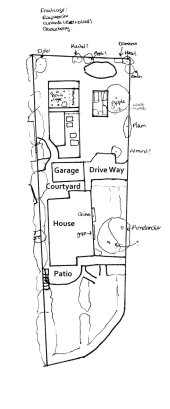
 1
1




 1
1




 )
)

 2
2




Dusko Bojic wrote:Hi all,
I acquired Siberian Peashrub seeds and would like to make sure I did it right. I soaked the seeds in water for 30 hours and then placed it on top of potting soil which I mixed with a bit of sand. I then covered the seeds with thin layer of sand. Im watering from underneath. The pot is placed into a dish filled with water so the soil can such it as much it needs. The pot is inddor beside a window. Temp in that room is around 12 degress Celsius.
I started keeping bees in top bar hives and would love to give them this nectar giving shrub.
Any suggestions? If so far is done correctly how do I proceed if it starts growing?
Thank you
Our projects:
in Portugal, sheltered terraces facing eastwards, high water table, uphill original forest of pines, oaks and chestnuts. 2000m2
in Iceland: converted flat lawn, compacted poor soil, cold, windy, humid climate, cold, short summer. 50m2
 1
1




 1
1




Gert in the making
 1
1




 one of you say warmed them up other say put them outin frozen weather
one of you say warmed them up other say put them outin frozen weather 
 1
1





Gert in the making
 3
3




 1
1






 1
1




Our projects:
in Portugal, sheltered terraces facing eastwards, high water table, uphill original forest of pines, oaks and chestnuts. 2000m2
in Iceland: converted flat lawn, compacted poor soil, cold, windy, humid climate, cold, short summer. 50m2
 1
1




Much better to do this: sown the seeds in pots outside, in freezing weather, and let it be for about 1 month or even 2 months. Because these seeds in nature need cold stratification.
 1
1




 2
2




Diversified Food forest maker . Fill every niche and you'll have less weeds (the weeds are the crop too). Fruit, greens, wild harvest, and nuts as staple. Food processing and preservation are key to self self-sufficiency. Never eat a plant without posetive identification and/or consulting an expert.
 1
1




-- Wisdsom pursues me but I run faster.
 1
1




Earthworks are the skeleton; the plants and animals flesh out the design.

 1
1




 4
4




Come join me at www.peacockorchard.com











 1
1




Earthworks are the skeleton; the plants and animals flesh out the design.











 1
1




Earthworks are the skeleton; the plants and animals flesh out the design.



 1
1




Myron Platte wrote:https://permies.com/t/45238/Siberian-Pea-Tree-aka-Caragana#1224268
Pregermination treatments and germination testing.
For a leguminous species, Siberian peashrub does not have a
very impermeable seedcoat. Untreated seeds will germinate
in 15 days after sowing, but the best germination (87 to 100% in 5 days)
can be obtained by soaking seeds for 24 hours in cold or hot (85 °C) water.
Successful germination has also been reported after acid scarification,
cold stratification for 2 weeks, or fall planting.
Certain pesticides,such as captan and thiram, can apparently increase
germination, possibly by inhibiting seed-borne disease.
The official testing prescription for Siberian peashrub seeds
calls for clipping or filing through the seedcoat on thecotyledon end,
soaking these seeds in water for 3 hours,then germinating them for 21 days
at alternating temperatures of 20/30 °C. Germination tests have also
been carried out in flats of sand or perlite and in Jacobsen germinators
for 14 to 60 days at the same alternating temperatures.
Germination after 25 to 41 days averaged 45 to 72% and 55 to 100% after 60 days.
"The best time to plant a tree was 20 years ago. The second best time is now." Chinese proverb





 1
1















 3
3




Earthworks are the skeleton; the plants and animals flesh out the design.

|
I have gone to look for myself. If I should return before I get back, keep me here with this tiny ad:
How To Grow Grain On the Homestead by Leigh Tate
https://permies.com/t/282571/Grow-Grain-Homestead-Leigh-Tate
|





